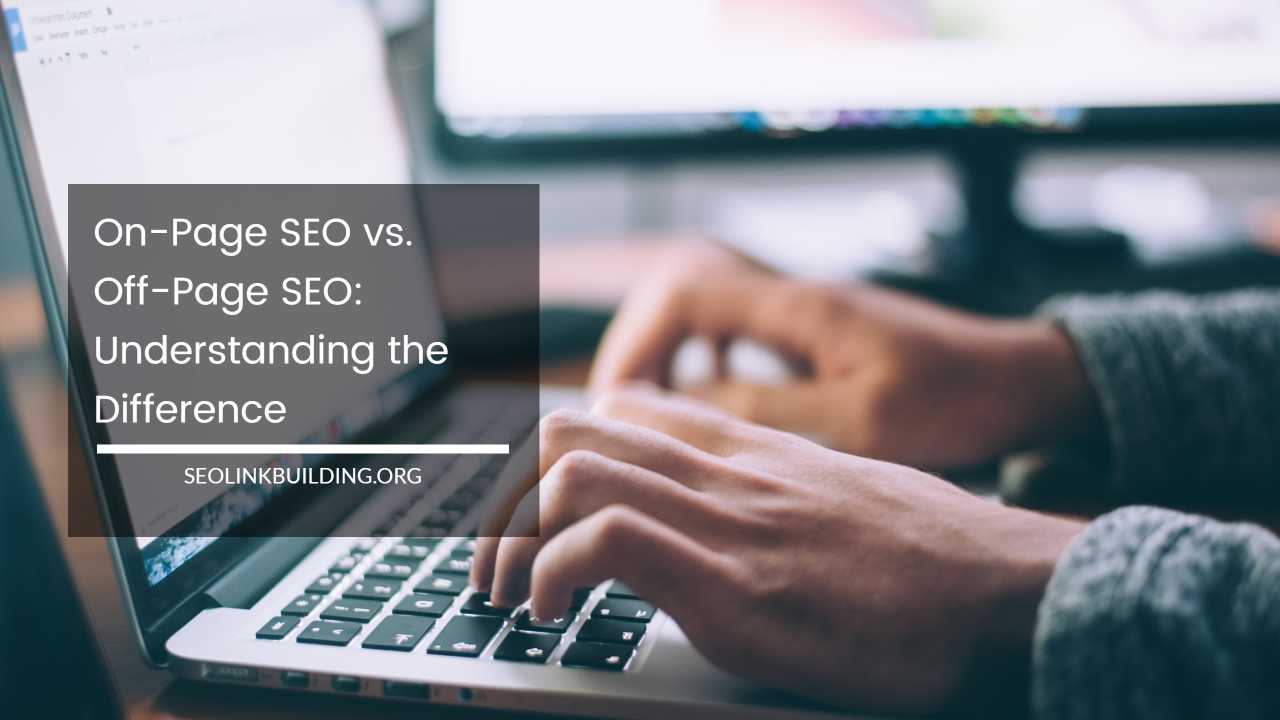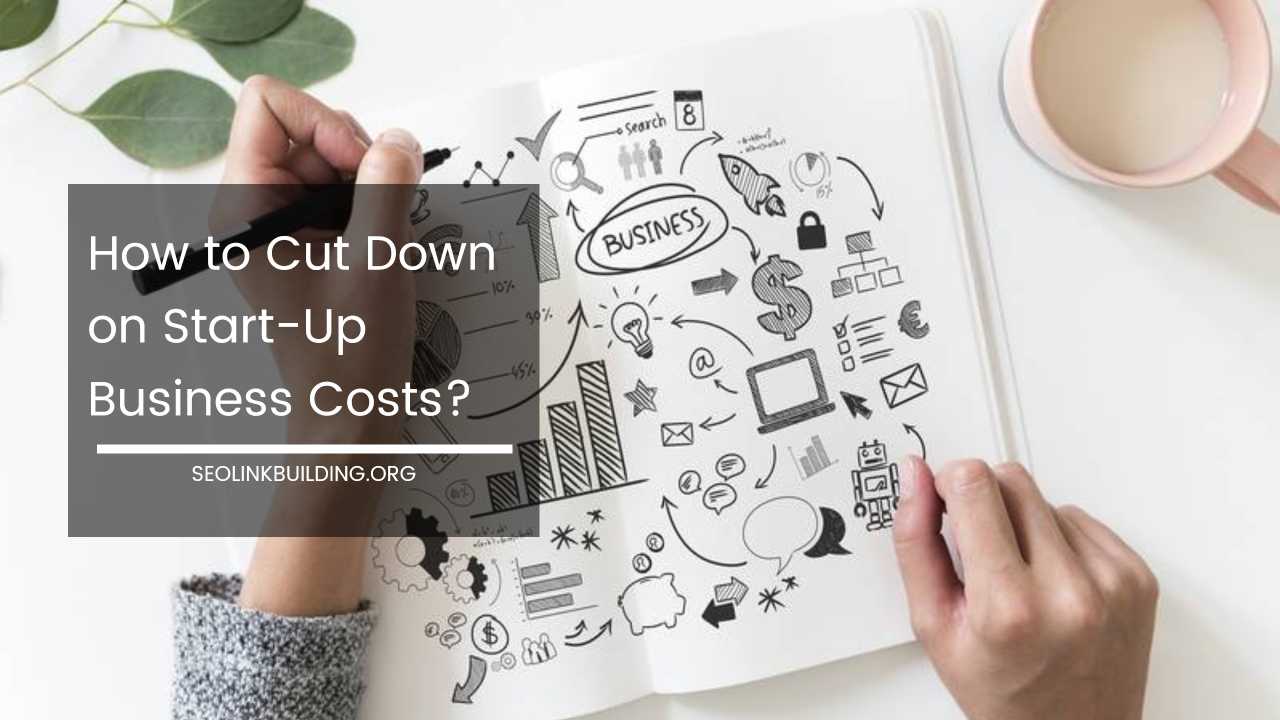On-Page SEO vs. Off-Page SEO: Understanding the Difference

On-Page SEO vs. Off-Page SEO
Search Engine Optimization (SEO) is the cornerstone of online visibility and success. It’s the practice of optimizing your website to rank higher in search engine results pages (SERPs) and attract more organic traffic.
SEO consists of numerous strategies and tactics, but it’s often categorized into two main categories: On-Page SEO and Off-Page SEO.
In this comprehensive guide, we’ll delve into the differences between these two fundamental aspects of SEO and explain how each contributes to your website’s overall search engine performance.
What is On-Page SEO?
On-Page SEO, also known as on-site SEO, refers to the optimization efforts made directly on your website’s pages. These optimizations are within your control and can be implemented through various techniques and practices.
The primary goal of On-Page SEO is to make your web pages more appealing to both users and search engines. Here are the key elements of On-Page SEO:
1. Keyword Research and Usage
Keyword research is the foundation of On-Page SEO. It involves identifying the specific keywords and phrases that your target audience uses to search for information or products related to your content.
Once you’ve selected your target keywords, you should strategically incorporate them into your content, including:
- Title Tags: Include your primary keyword in the title tag to signal the topic of the page.
- Headings (H1, H2, H3, etc.): Use keywords in headings and subheadings to create a clear content structure.
- Content: Write high-quality, informative content that naturally incorporates keywords without overstuffing.
- URLs: Create user-friendly and keyword-rich URLs for your web pages.
- Meta Descriptions: Craft compelling meta descriptions that encourage users to click on your search results.
2. Quality Content
High-quality content is a cornerstone of On-Page SEO. Search engines prioritize content that provides real value to users. Your content should be:
- Informative: Offer valuable information that addresses users’ questions or needs.
- Engaging: Create content that captivates readers and keeps them on your page.
- Relevant: Ensure that your content is directly related to the topic or keyword you’re targeting.
- Unique: Avoid duplicate content, and provide original insights and perspectives.
3. Page Load Speed
Page speed is a crucial On-Page SEO factor. Slow-loading pages can lead to higher bounce rates and lower rankings. To improve page load speed, you can:
- Compress Images: Reduce image file sizes without compromising quality.
- Minimize Code: Remove unnecessary code and scripts from your website.
- Content Delivery Network (CDN): Use CDNs to distribute your content across multiple servers, reducing load times.
4. Mobile Optimization
With the increasing use of mobile devices, mobile optimization is a critical aspect of On-Page SEO. Ensure that your website is responsive and user-friendly on mobile devices.
Google’s mobile-first indexing means that it primarily uses the mobile version of your site for ranking and indexing.
5. User Experience (UX)
User experience is closely tied to On-Page SEO. A positive user experience can lead to longer dwell times and higher rankings. To improve UX, focus on:
- Clear Navigation: Create an intuitive site structure with easy-to-follow menus.
- Readable Fonts: Use legible fonts and maintain a proper font size.
- Internal Linking: Create logical internal linking structures to help users navigate your site.
- Multimedia: Include engaging multimedia elements, such as images and videos.
6. Security (HTTPS)
Security is a growing concern on the web, and search engines prioritize secure websites. Ensure that your website uses HTTPS, as indicated by the padlock symbol in the browser’s address bar.
This not only encrypts data but also boosts your SEO rankings.
What is Off-Page SEO?
Off-Page SEO, also known as off-site SEO, focuses on optimization efforts that occur outside your website.
Unlike On-Page SEO, you have less direct control over Off-Page SEO factors, as they often involve external factors and other websites.
The primary goal of Off-Page SEO is to build your website’s authority, trustworthiness, and credibility in the eyes of search engines. Here are the key elements of Off-Page SEO:
1. Backlinks (Inbound Links)
Backlinks are one of the most critical factors in Off-Page SEO. They are links from other websites to your site. Search engines see backlinks as votes of confidence in your content.
The more high-quality backlinks your website has, the more authoritative it appears to search engines.
To build high-quality backlinks, you can:
- Create Outstanding Content: Publish valuable and shareable content that naturally attracts links from other websites.
- Guest Posting: Write guest posts for authoritative websites in your niche, including a relevant link back to your site.
- Outreach: Reach out to other website owners or bloggers in your industry and ask for backlinks. Ensure your request is personalized and highlights the value your content provides.
- Broken Link Building: Find broken links on other websites, especially those that were linking to content similar to yours. Offer your content as a replacement.
2. Social Media Engagement
Active engagement on social media platforms can indirectly impact Off-Page SEO. While social signals themselves may not be direct ranking factors, increased social sharing can lead to more visibility and potential backlinks.
3. Online Reputation Management
Managing your online reputation is crucial for Off-Page SEO. Monitor and respond to reviews, comments, and mentions of your brand or website. Positive reviews and a good online reputation can indirectly impact your rankings.
4. Influencer Marketing
Collaborating with influencers in your niche can help you gain exposure and backlinks. Influencers often have a significant following and can introduce your content to a wider audience.
5. Brand Mentions
Keep an eye on brand mentions across the web. Whenever your brand or website is mentioned without a link, reach out to the website owner or author and kindly request that they include a backlink.
On-Page SEO vs. Off-Page SEO: The Differences
Now that we’ve explored the key elements of both On-Page and Off-Page SEO, let’s summarize the differences between these two essential components:
Control:
- On-Page SEO: You have direct control over the optimization efforts made within your website, including content, keywords, and technical aspects.
- Off-Page SEO: You have less direct control because it involves external factors like backlinks, social media mentions, and online reputation management.
Focus:
- On-Page SEO: Focuses on optimizing the content and elements within your website to improve user experience and relevance to search queries.
- Off-Page SEO: Focuses on building authority, credibility, and trustworthiness of your website through external factors like backlinks and social signals.
Impact:
- On-Page SEO: Directly affects the content quality, user experience, and on-site technical aspects, which can influence rankings.
- Off-Page SEO: Indirectly impacts rankings by enhancing your website’s authority and reputation in the eyes of search engines.
Techniques:
- On-Page SEO: Techniques include keyword optimization, content creation, mobile optimization, and user experience improvements.
- Off-Page SEO: Techniques involve link building, social media engagement, influencer collaborations, and online reputation management.
Timeframe:
- On-Page SEO: Changes made to your website can yield relatively quick results in terms of improved rankings and user experience.
- Off-Page SEO: Building a strong off-page SEO profile often takes time, as it relies on the acquisition of quality backlinks and the growth of your online reputation.
The Synergy of On-Page and Off-Page SEO
While On-Page and Off-Page SEO are distinct concepts, they are not mutually exclusive. In fact, the most successful SEO strategies involve a synergistic approach that combines both On-Page and Off-Page optimization efforts. Here’s why they work better together:
- Quality Content and Backlinks: High-quality content (On-Page) often attracts natural backlinks (Off-Page) from other websites. When your content is valuable and relevant, other websites are more likely to link to it.
- User Experience and Reputation: A positive user experience (On-Page) can lead to increased user engagement and social sharing (Off-Page). Positive user interactions and social signals can indirectly impact your online reputation.
- Keywords and Anchor Text: Carefully chosen keywords (On-Page) are often used as anchor text in backlinks (Off-Page). This anchor text helps search engines understand the context and relevance of your content.
- Authority Building: While Off-Page SEO focuses on building authority, the quality and relevance of your content (On-Page) contribute to your website’s perceived authority in your niche.
- Content Promotion: Promoting your high-quality content (On-Page) through social media and influencer marketing (Off-Page) can amplify its reach and impact.
Final Thoughts
On-Page SEO and Off-Page SEO are two fundamental aspects of a successful SEO strategy. On-Page SEO involves optimizing your website’s content and technical elements to enhance user experience and relevance.
Off-Page SEO, on the other hand, focuses on building your website’s authority and reputation through external factors like backlinks and social engagement.
Understanding the differences and synergies between On-Page and Off-Page SEO is essential for a well-rounded and effective SEO strategy.
By combining both approaches, you can improve your website’s rankings, visibility, and overall online success.
SEO is an ongoing process, so continuously refine and adapt your strategies to stay competitive in the dynamic world of search engine optimization.













